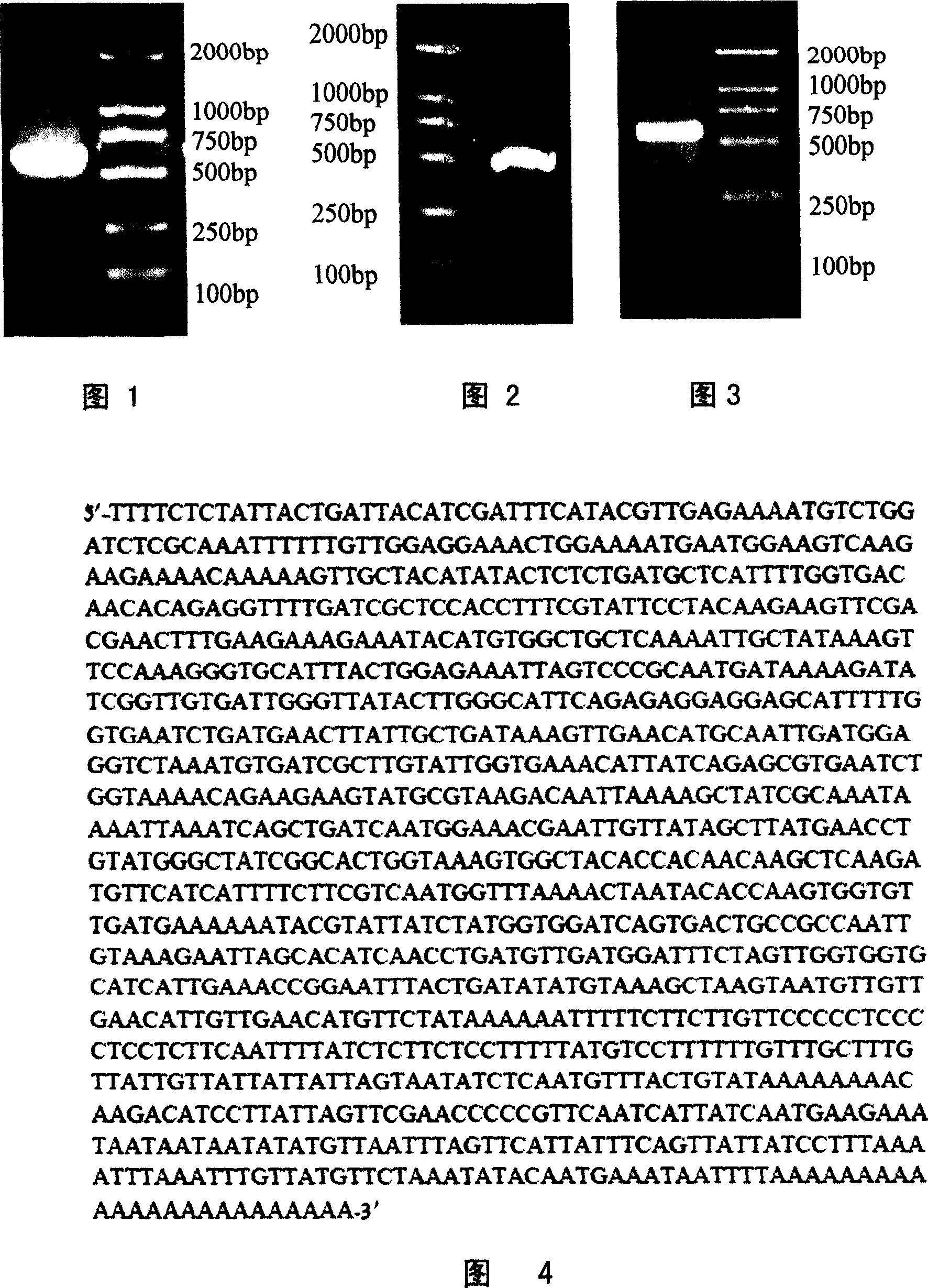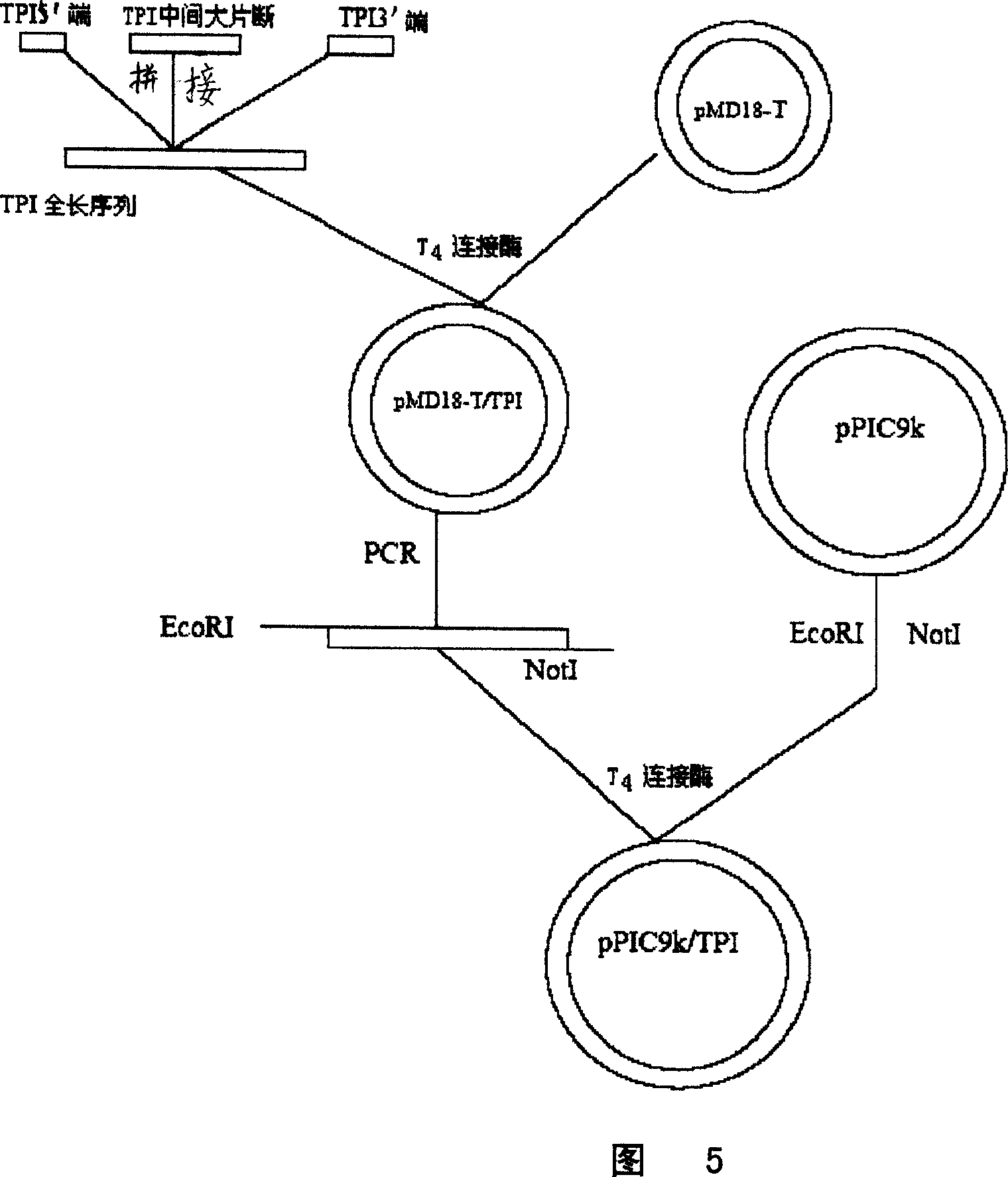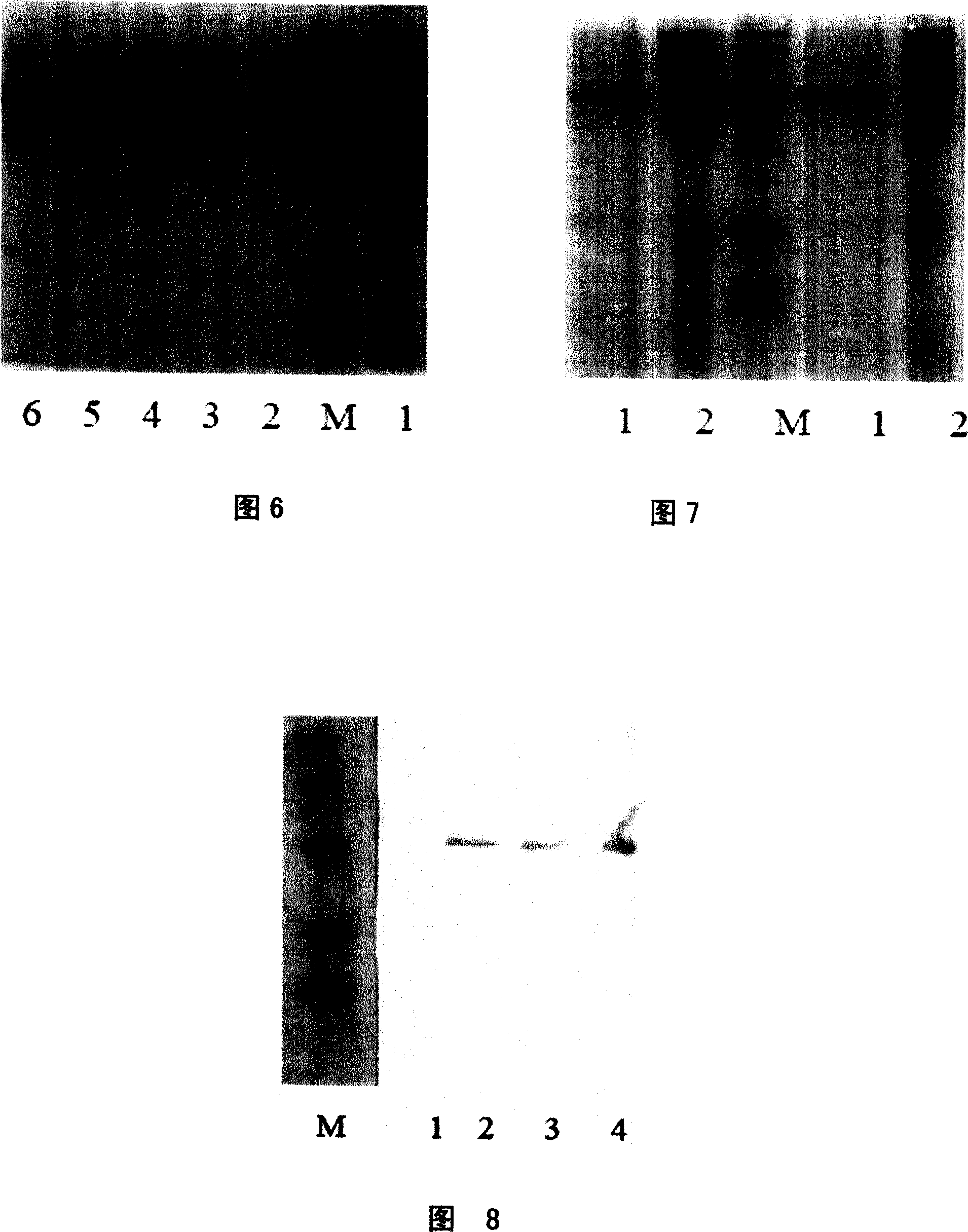Method for producing triose phosphate isomerase
A technology of triose phosphate and isomerase, applied in the biological field, can solve the problems such as delay of effective treatment time, low detection rate, influence control, etc.
- Summary
- Abstract
- Description
- Claims
- Application Information
AI Technical Summary
Problems solved by technology
Method used
Image
Examples
Embodiment 1
[0053] Cloning of embodiment 1 triose phosphate isomerase full-length gene
[0054] 1.1 Amplification of large fragments of TPI gene
[0055] A pair of primers were designed using Dnaman according to the conserved region of the reported cDNA sequence GenBank U50847 of the triose phosphate isomerase gene of Schistosoma japonicum strain GenBank U50847 and the cDNA sequence GenBank M83294 of the triose phosphate isomerase gene of Schistosoma mansoni:
[0056] P1: 5'-TGTCTGGATCTCGGAAA-3' (SEQ ID NO: 1)
[0057] P2: 5'-GCTCCACCATAGATAATACG-3' (SEQ ID NO: 2)
[0058] Using oligo(dT)18, the cDNA sequence of TPI gene was reverse-transcribed from the total RNA of Orimilha turkestania adults. Then use P1 and P2 to amplify a large fragment of TPI gene. The PCR reaction parameters are: 94°C for 2min, 94°C for 45s, 53°C for 1min, 72°C for 1min, 35cycles, and 72°C for 10min.
[0059] 1.2 Amplification of the 5' end sequence of the TPI gene
[0060] Three primers were designed according...
Embodiment 2
[0073] The construction of embodiment 2 recombinant plasmids
[0074] 2.1 Amplification of the full-length sequence of the TPI gene
[0075] According to the registered TPI full-length cDNA sequence, design a pair of specific primers containing EcoRI and NotI restriction sites,
[0076] P1: 5'-GCAGAATTCGAGAAAATGTCTGGATC-3' (SEQ ID NO: 8)
[0077] P1: 5'-GGTGCGGCCGCGTTCGAACTAATAAGGATG-3' (SEQ ID NO: 9)
[0078] Using oligo(dT) 18 The cDNA sequence of the TPI gene was reverse transcribed from the total RNA of the adult Orchidina turkestan. Then amplify the full-length sequence of TPI through P1 and P2. The PCR parameters are: 94°C for 2min, 94°C for 45s, 52°C for 30s, 72°C for 30s, 5 cycles, 72°C for 10min. The PCR product is connected by TA cloning On the pMD18-T Vector, PCR identification is correct and then sequenced.
[0079] 2.2 Construction of pPIC9k-TPI
[0080] The recombinant vector pMD18-T / TPI and the expression vector pPIC9k (provided by the Biotechnology Center...
Embodiment 3
[0084] Transformation and screening of embodiment 3 recombinant plasmids
[0085] 3.1 Transformation of recombinant plasmids
[0086] The recombinant plasmid was digested with SalI (37°C for 5h) to make it linearized, and transformed into the prepared competent yeast cell GS115 (provided by the Biotechnology Center of Shanghai Academy of Agricultural Sciences) by electroporation at 1.5kv, 200Ω, 25μF.
[0087] 3.2 Screening of multi-copy recombinant plasmids
[0088] The bacterial solution transformed by electroporation was spread on the MD plate of histidine-deficient medium, cultured at 30°C, and colonies appeared after 3 days. Each grown colony was continuously cultured on three 96-well cell culture plates for one week to make the bacterial solution have the same cell density, and the bacterial solution was added dropwise on a YPD plate containing 1 mg / ml G418, and incubated at 30°C until the colony grew.
[0089] As a result, multi-copy plasmid strains were obtained.
PUM
 Login to View More
Login to View More Abstract
Description
Claims
Application Information
 Login to View More
Login to View More - R&D
- Intellectual Property
- Life Sciences
- Materials
- Tech Scout
- Unparalleled Data Quality
- Higher Quality Content
- 60% Fewer Hallucinations
Browse by: Latest US Patents, China's latest patents, Technical Efficacy Thesaurus, Application Domain, Technology Topic, Popular Technical Reports.
© 2025 PatSnap. All rights reserved.Legal|Privacy policy|Modern Slavery Act Transparency Statement|Sitemap|About US| Contact US: help@patsnap.com



